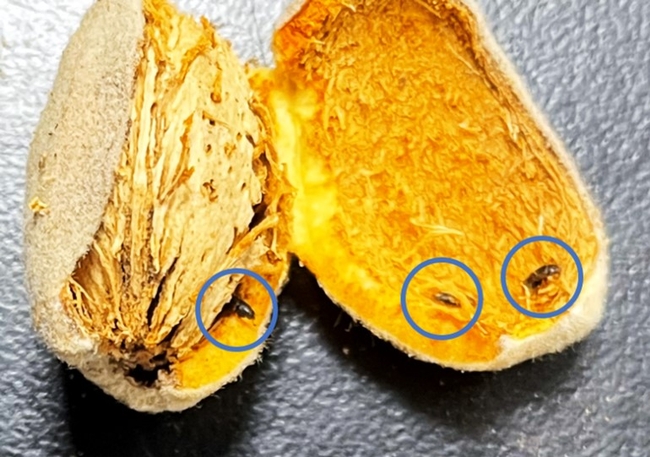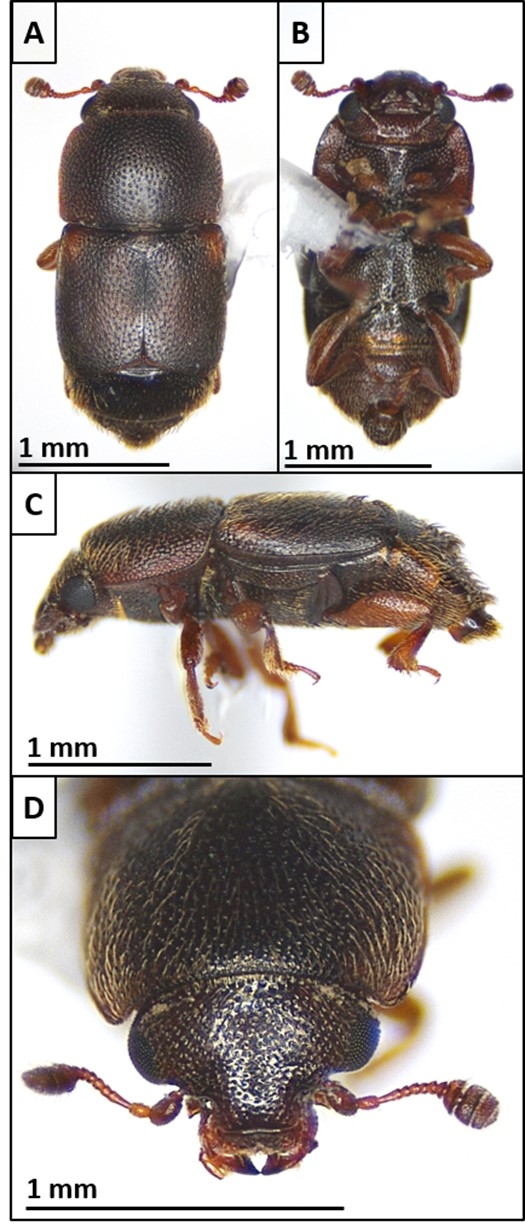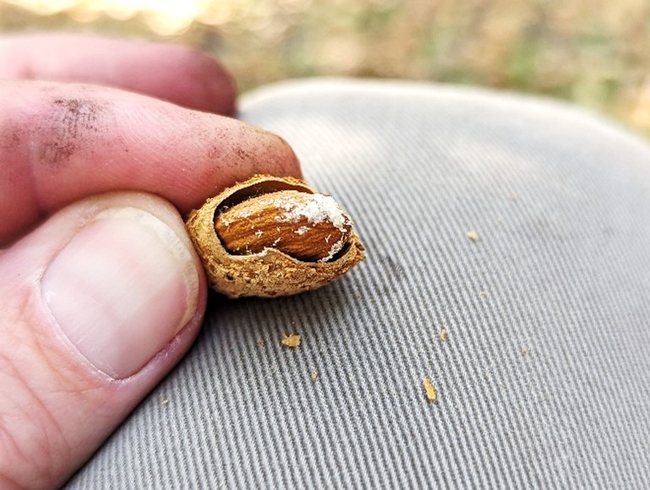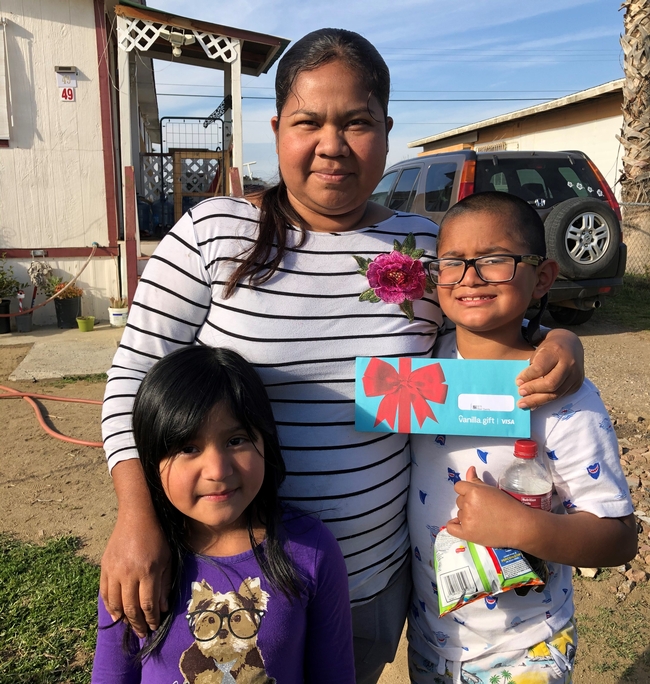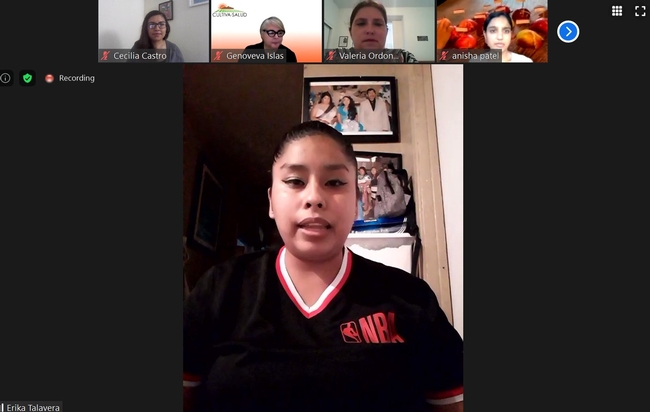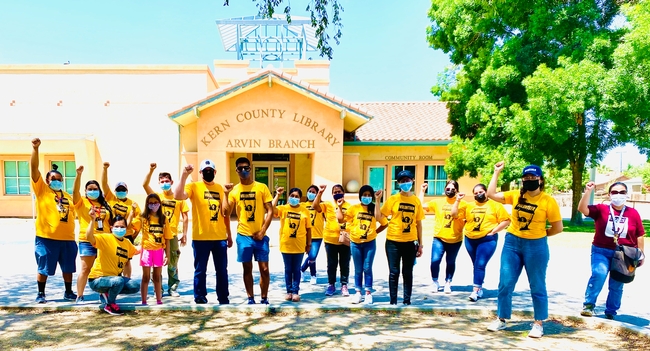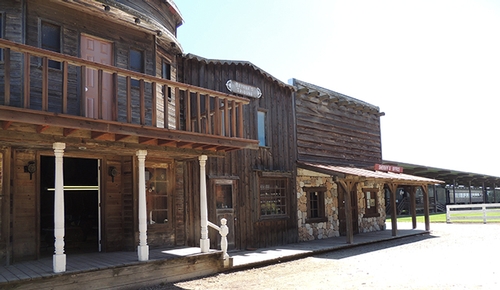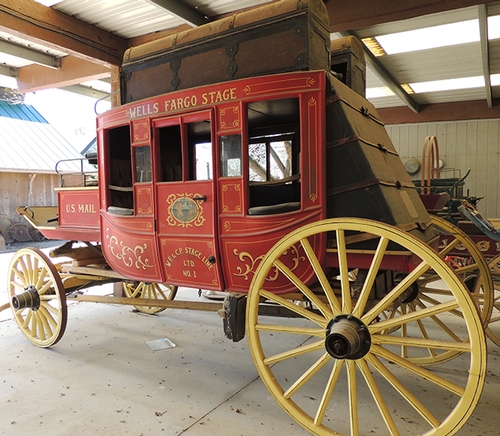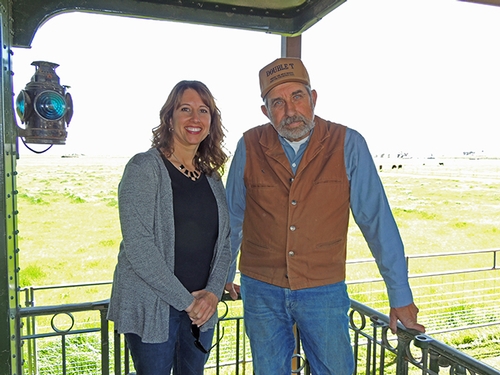
Posts Tagged: san joaquin
Journey to Victory at the 4-H FCS National Championship
I'm Lily Q from Contra Costa County and I was declared the Overall Champion of the National Fashion...
New pest infesting almonds and pistachios in the San Joaquin Valley
Crop sanitation will be key to controlling the invasive carpophilus beetle
Growers and pest control advisers (PCAs) should be on the lookout for a new pest called carpophilus beetle (Carpophilus truncatus). This pest was recently found infesting almonds and pistachios in the San Joaquin Valley, and is recognized as one of the top two pests of almond production in Australia. Damage occurs when adults and larvae feed directly on the kernel, causing reductions in both yield and quality.
Populations of carpophilus beetle were first detected in September in almond and pistachio orchards by University of California Cooperative Extension Specialist Houston Wilson of UC Riverside's Department of Entomology. Pest identification was subsequently confirmed by the California Department of Food and Agriculture.
Wilson is now working with Jhalendra Rijal, UC integrated pest management advisor, North San Joaquin Valley; David Haviland, UCCE farm advisor, Kern County; and other UCCE farm advisors to conduct a broader survey of orchards throughout the San Joaquin Valley to determine the extent of the outbreak.
To date, almond or pistachio orchards infested by carpophilus beetle have been confirmed in Stanislaus, Merced, Madera and Kings counties, suggesting that the establishment of this new pest is already widespread. In fact, some specimens from Merced County were from collections that were made in 2022, suggesting that the pest has been present in the San Joaquin Valley for at least a year already.
“It has likely been here for a few years based on the damage we've seen," Rijal said.
This invasive beetle overwinters in remnant nuts (i.e. mummy nuts) that are left in the tree or on the ground following the previous year's harvest. Adults move onto new crop nuts around hull-split, where they deposit their eggs directly onto the nut. The larvae that emerge feed on the developing kernels, leaving the almond kernel packed with a fine powdery mix of nutmeat and frass that is sometimes accompanied by an oval-shaped tunnel.
Carpophilus beetle has been well-established in Australia for over 10 years, where it is considered a key pest of almonds. More recently, the beetle was reported from walnuts in Argentina and Italy as well. Carpophilus truncatus is a close relative to other beetles in the genus Carpophilus, such as the driedfruit beetle (C. hemipterus) that is known primarily as a postharvest pest of figs and raisins in California.
Monitoring for carpophilus beetle is currently limited to direct inspection of hull split nuts for the presence of feeding holes and/or larvae or adult beetles. A new pheromone lure that is being developed in Australia may soon provide a better monitoring tool for growers, PCAs and researchers.
“We're lucky to have colleagues abroad that have already been hammering away at this pest for almost a decade,” said Haviland. “Hopefully we can learn from their experiences and quickly get this new beetle under control.”
The ability to use insecticides to control carpophilus beetle remains unclear. The majority of the beetle's life cycle is spent protected inside the nut, with relatively short windows of opportunity available to attack the adults while they are exposed. The location of the beetles within the nut throughout most of their life cycle also allows them to avoid meaningful levels of biological control.
In the absence of clear chemical or biological control strategies, the most important tool for managing this beetle is crop sanitation.
“Given that this pest overwinters on remnant nuts, similar to navel orangeworm, crop sanitation will be fundamental to controlling it,” Wilson said. “If you needed another reason to clean up and destroy mummy nuts – this is it.”
In Australia, sanitation is currently the primary method for managing this pest. And here in California, new research and extension activities focused on carpophilus beetle are currently in the works.
“It's important that we get on top of this immediately,” said Wilson. “We're already starting to put together a game plan for research and extension in 2024 and beyond.”
If you suspect that you have this beetle in your orchard, please contact your local UC Cooperative Extension farm advisor (https://ucanr.edu/About/Locations/), County Agricultural Commissioner (https://cacasa.org/county/) and/or the CDFA Pest Hotline (https://www.cdfa.ca.gov/plant/reportapest/) at 1-800-491-1899.
No break for kids’ hunger: Partnerships help secure school meal programs
Partnering for California
As the gravity of the COVID-19 pandemic hit communities across the U.S. in mid-March 2020, the policy team at UC Agriculture and Natural Resources' Nutrition Policy Institute received an urgent email from a longtime partner in the San Joaquin Valley.
“It was simply entitled 'Help' in the subject line – with multiple exclamation points,” said Christina Hecht, NPI senior policy advisor.
The colleague was writing on behalf of community groups concerned that pandemic-related school closures would jeopardize school meal programs – a nutritional lifeline for children in a predominantly agricultural region with many low-income households.
Hecht immediately contacted a frequent collaborator, Anisha Patel, an associate professor of pediatrics at Stanford University. To help school districts continue those essential meals during the fast-approaching spring holiday, they quickly produced a fact sheet, “Kids' Hunger Doesn't Take a Spring Break,” sharing resources on how districts could use new program flexibility to continue meal distribution.
Then, as the pandemic evolved throughout 2020, the U.S. Department of Agriculture and California Department of Education continued to issue a flurry of waivers and guidance updates. To keep pace, the authors produced three more fact sheets to help districts digest the information and adapt and sustain their school meal programs.
“We tried to make a really user-friendly resource that would help districts sort through everything they needed to do, and easily discover resources for best practices,” Hecht said.
The fact sheet information, paired with advocacy by local partners, encouraged districts to take steps to make more meals more easily accessible to students by taking advantage of USDA waivers: for example, allowing parents to pick up meals without children present, providing multiple meals in one pick-up or implementing bus delivery of meals.
These efforts attracted the attention of the School Nutrition Association, a prominent nonprofit representing more than 50,000 members who provide meals to students across the country. The organization co-branded general versions of the fact sheets and distributed them widely through its website.
Gathering community perspectives on school meals
Those resources represent just one way that lessons from the San Joaquin Valley experience are shaping the national conversation on school nutrition programs. Cultiva La Salud and Dolores Huerta Foundation – health equity and social justice organizations based in Fresno and Bakersfield, respectively – approached the researchers to study ways to boost participation in school meal programs and address food insecurity in their largely Latino communities.
“Working alongside Stanford and NPI is crucial in expanding our capacity and ability to use data and research as a tool to empower parents to advocate for improved health and wellness policies and practices,” said Cecilia Castro, deputy director of Dolores Huerta Foundation, which works in Kern, Fresno and Tulare counties, as well as Antelope Valley in Los Angeles County.
To better understand the “barriers and facilitators” to meal program participation, Hecht, Patel and their collaborators – including student trainees who were eager to learn about community-based participatory research and wanted to help their local communities – sought the perspectives of school district administrators and staff, community groups and parents.
Through the relationships nurtured by Cultiva La Salud and Dolores Huerta Foundation, the researchers convened focus groups of parents with children in six school districts across the San Joaquin Valley.
“We needed to understand better what helped and hindered families from getting the school meals,” Hecht said.
According to Castro, parents have leveraged their feedback to advocate for increased access to school meals, through the use of buses for meal delivery and changes to meal pickup times and locations.
“This engagement has validated the lived experience of our communities,” Castro said. “It has provided an additional strategy for parent leaders to use in efforts to engage decision-makers about ways to improve quality and access to school meals.”
Another key takeaway from these conversations is that the parents are deeply concerned about the content and nutritive value of the meals served to their children.
“We learned that although school meals meet nutrition standards, parents are not aware of this,” Patel said. “Parents also worry about the healthfulness of school meals, noting heavy processing and added sugar. Most compelling was that parents want to provide feedback to improve school meal appeal and healthfulness but have no way to act.”
San Joaquin Valley voices go national
The Nutrition Policy Institute played a crucial role in bringing the parents' perspectives to legislative staff members at the state and federal levels, through the production of four policy briefs that center the voices of San Joaquin Valley residents. In the first, “School Meals: Kids Are Sweeter with Less Sugar,” one parent says: “Children cannot sustain themselves on treats that give pure sugar…They give with the best intentions, but less food would be better, but better quality and healthier.”
“One of the most rewarding parts of all this work has been seeing how meaningful it has been for the parents in the San Joaquin Valley to see their voices getting carried all the way to Washington, D.C. by these policy briefs,” said Hecht. “And it was so meaningful for them that Cultiva La Salud had the briefs translated into Spanish so that the parents could actually read their own words.”
Their voices joined a chorus comprising over 200 organizations who called for universal school meals across California. In June, the state became the first in the nation to adopt a policy, starting in the 2022-2023 school year, to provide free meals for all K through 12 public school students, regardless of family income. Momentum continues to build on the national scale.
The next step for the team is to explore ways to make school meals even more appealing to potential program participants in the Latino communities of San Joaquin Valley. Patel said they will draw on the expertise of Szu-chi Huang, associate professor of marketing in Stanford's Graduate School of Business.
“Using a participatory approach, we will work with parents and school officials to design an intervention focused on communicating the benefits of school meals, and test strategies to improve the appeal of school meals,” Patel explained. “Then we will examine how that intervention affects parents' satisfaction with school meals, students' participation in meals and food insecurity.”
Those insights will be another valuable result of a unique partnership – spurred by a call for help and galvanized by the ongoing health crisis – that continues to benefit families across California.
“Our partnership has been very unusual and very fruitful because we had policy experts, we had research experts and trainees, and then we had the organizations actually working in the community,” Hecht said. “And as we look back on it, it's hard to imagine working that successfully without that kind of partnership.”
Invasive Spotlight: Nutria
Nutria are found near rivers, streams, lakes, ponds and wetlands. Their burrowing and feeding on...
Family grows History Train Adventure from organic dairy roots
Tony Azevedo's father moved the family from Watsonville, where he operated a small dairy, to Stevenson in the heart of the San Joaquin Valley in 1958. Azevedo rented 15 acres of land that had become alkaline through irrigation with no drainage for many years. He put in drainage, worked the land and put it into pasture. Starting with this land and adding 10 or 15 acres at a time, Azevedo developed the 400 acre Double T Ranch as the first organic dairy in the San Joaquin Valley.
Tony Azevedo, with his wife Carol and other family members, kept the organic dairy operating for many years until consolidation and competition in the industry forced them to get out of the dairy business. Fortunately, Tony and Carol had also been growing another passion on the Double T Ranch: The Double T Agriculture Museum and the History Train.
The Double T Agricultural Museum was built as a tribute to all the farm families of the past who have fed Americans. The exhibits reflect the life and times of family farmers and industry from the 1800s to the 1950s. From lovingly restored horse-drawn vehicles and carriages to a full-size restored steam locomotive, the collection is host to many vintage treasures. School-children enjoy visiting the old west town and learning the story of how trains transported California crops throughout the country and brought new life to small towns. Brides can enjoy a ride in an elegant historic horse-drawn carriage before their wedding ceremony at the Double T Ranch venue.
This year, with daughter Arlean Azevedo joining the team, The Double T is inviting the public to enjoy a train journey like no other. Here is how Arlean describes the latest adventure:
"Climb aboard our Historical Dinner Train for an evening of fine dining and a chance to see how the steam locomotive changed agricultural history in the San Joaquin Valley. Your evening will begin with a cocktail hour and a tour of one of California's premier Agricultural Museums. At the sound of the train whistle we'll begin boarding for the two hour virtual reality experience that includes a fifteen minute documentary while enjoying appetizers, followed by dinner. The History Train will leave you with a deep appreciation of what travel was like 100 years ago. Your evening will conclude with dessert and a walk through the “Baggage Car” filled with rail history memorabilia, antiques and collectibles."
Although the next History Train Dinner Tour on May 17, 2019 is sold out, seats are still available for the Saturday June 1, 2019 voyage. Prices are $70 per person and include all beverages, dinner and dessert. Advance reservations and payment are required.
Learn more about the train and reserve your tickets here.

